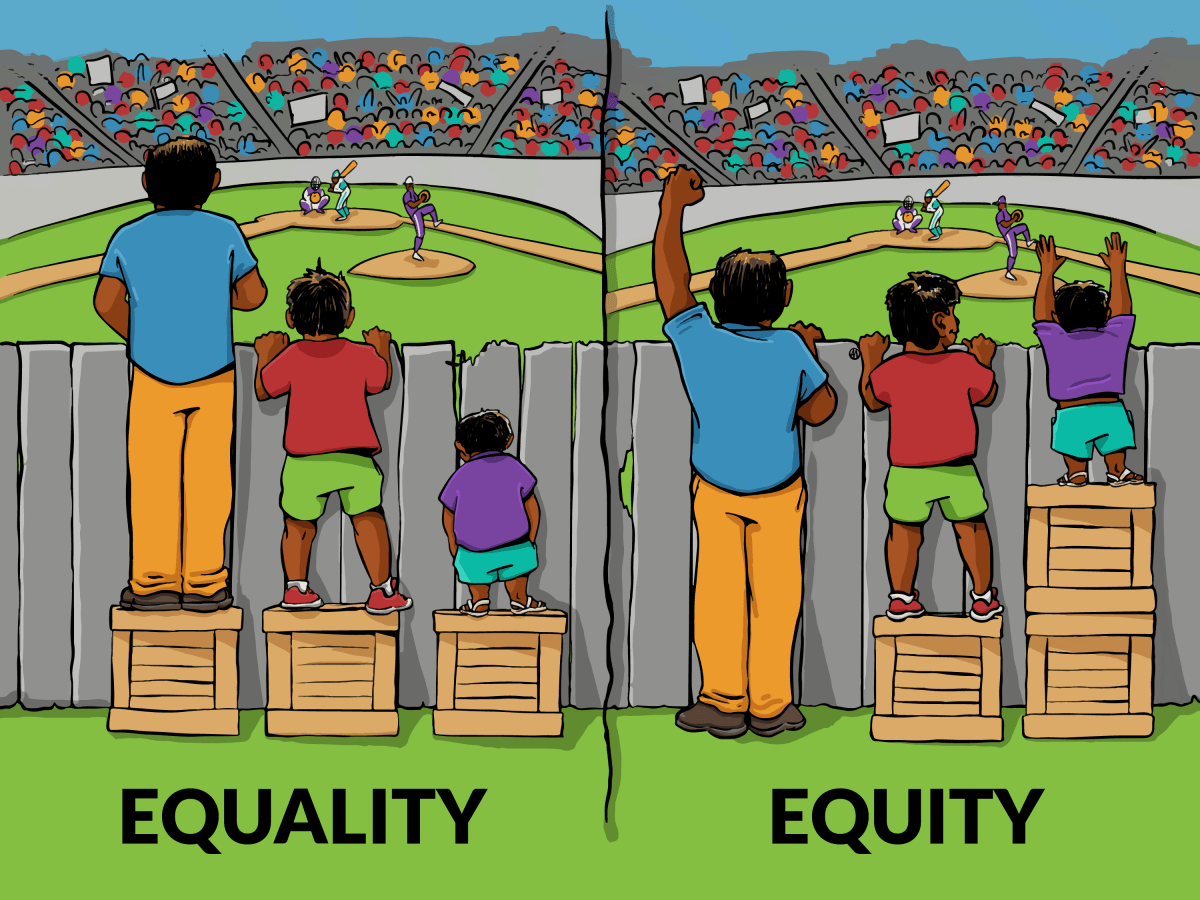Definition of Terms: Equity (Research Paper Pt. 6)
Excerpt from, “From social justice warrior to Gospel-centered servant of God: An educator’s reflection on critical theory and Christianity” (Linkletter, 2021).
The social justice movement has made a distinction between equality and equity, and it is important to understand how the movement distinguishes between the two. Equity is the idea that everyone should have equal outcomes in life (Rufo, 2021). It is focused on “adjusting shares in order to make sure citizens A and B are equal” and often demands that some identity groups are given privileges to even out perceived imbalance (James, 2020).
References
Lindsay, J. (2020, July 13). Equity. New Discourses.
Rufo, Christopher. (June 14, 2021). Critical Race Theory [video].
An additional note:
There is a lesson I used with my students that I think is a useful visual for understanding the potential pitfalls of equity. No imagery can be a perfect example, but just bare with me.
If a child in the class gets a cut severe enough for a bandaid, do I give a bandaid to all the students? Or just the student who needs it?
Similarly, if a child in the class hits their head severe enough they need an ice cube (ice pack) to address the wound, do I give an ice cube to every student? That would not make sense and would make the other students uncomfortable with their cold wet hands, not to mention distracted. All my students had their own individual strengths and weaknesses. Often times when I gave unique attention to one student to address their unique needs, the other students would chirp up saying, “that’s not fair, why don’t we get that help too.” For example, a quiet space to work on their writing, extra time after school to review their reading, a ruler to help them read line-by-line, a hundreds-chart taped to their desk, the ability to work curled up in a ball under their desk. I have allowed students to do all these things in my class and it would have made no sense to give each student those identical supports. For the other students it would have been an obstacle to them creating success - they may be uncomfortable working in the tight space under their desk, or find the ruler gets in the way of their note taking which is crucial for their comprehension - the supports they would be receiving in name of equity would actually be a nuisance and prevent them from achieving success. I gave each student equal opportunity to learning supports and they received supports unique to their individual needs.
I would share the previous examples with students to make the point that I will help them each in unique ways that fit their unique needs best.
There is a lot more to equity when it comes to education policies, and policies in general, but this example drives the point home. What is good and needed for one person, is not necessarily what every one needs. An equal outcome for everyone is not always in the best interest of everyone.
The terms equity and equality are used frequently these days and I fear people do not understand the difference between the words and the impact they each have on individual people. I encourage you to look beyond the words equity and equality to fully understand what the policy, social justice movement, or cause is aiming toward and think critically about whether that goal is truly helpful to the individual people it is aiming to support. If you aren’t sure, do some research and ask around to friends or family who have personal experience working/living/serving with the specific social group that is being addressed/supported. They will likely have first-hand experience and opinions about which policies are truly helpful to the individual members of the social group, and which policies do a disservice to the individual people.
There is a classic image used, especially in the world of education, to demonstrate the difference between equity and equality and I think it is a great conversation starter. It is often showing a discrimination between two social groups (children and adults or disabled and able-bodied). In the image, equity is the superior option because it enables the child or the disabled individual to view the game. I don’t disagree with this, but I want people to think beyond this image and do their own research into equity and equality and do their own thinking when it comes to specific movements, causes, or policies that are using the terms equity and equality. Instead of choosing what seems most immediately fair and least aggressive, think about the long term effects and the individual people that are being affected.
Rebecca

